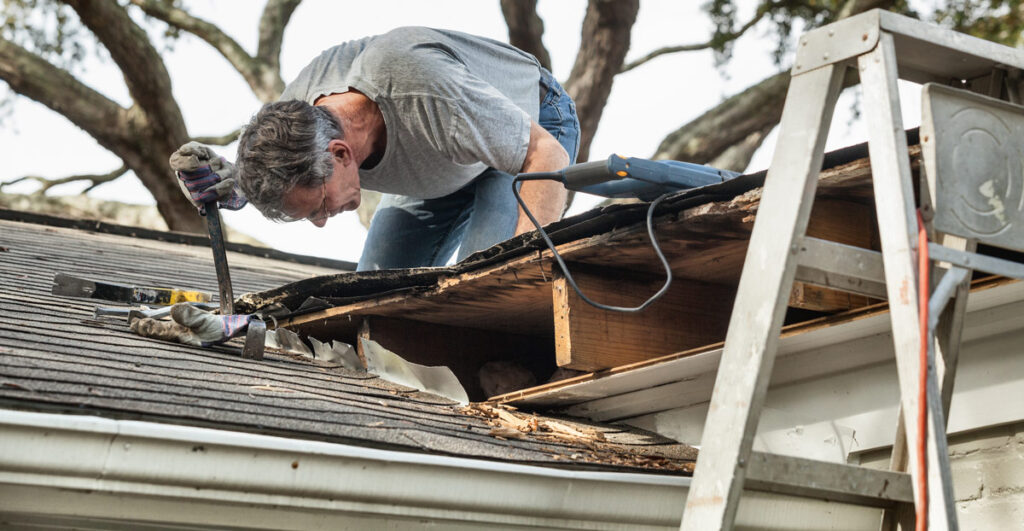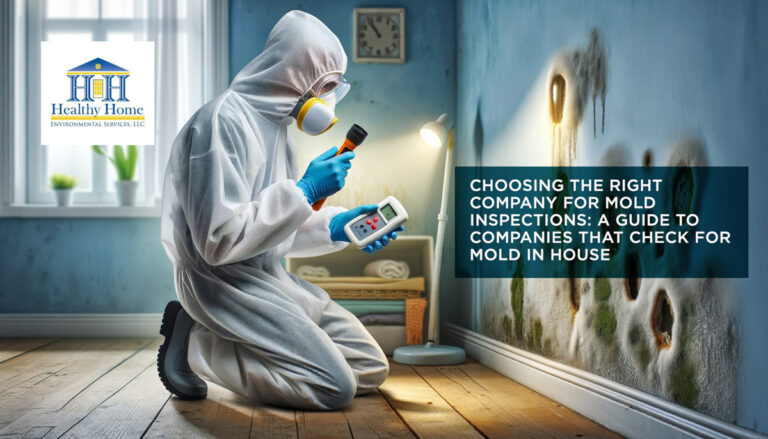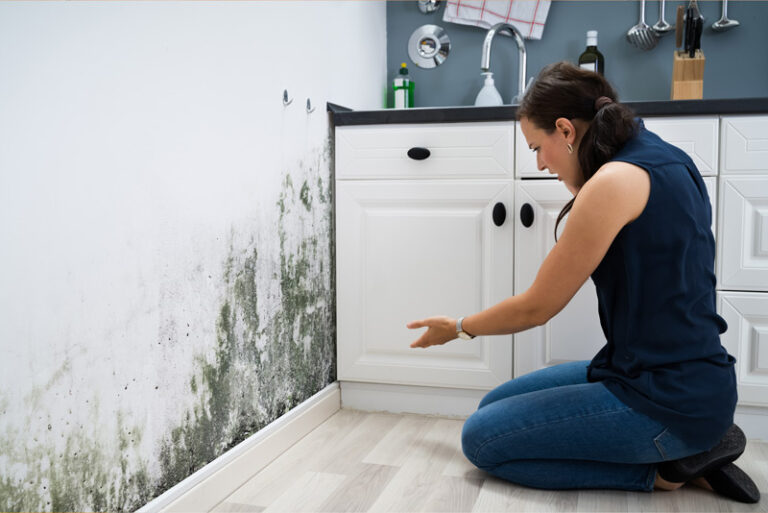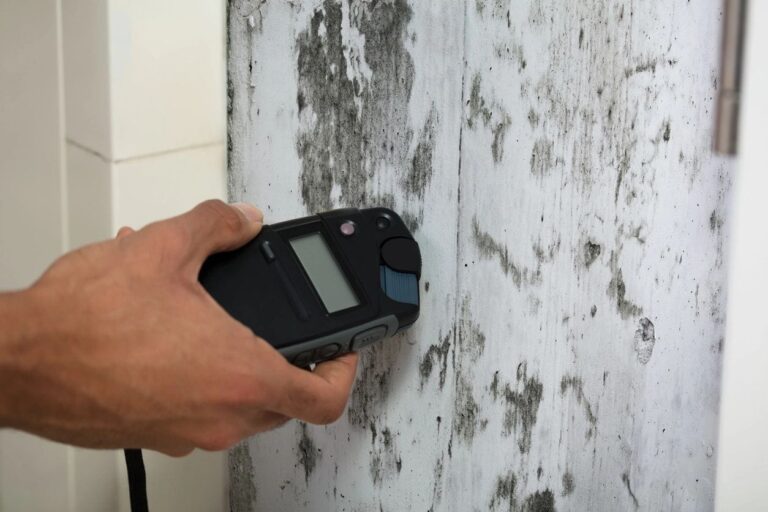Top 7 Most Common Places Mold Grows in Central Florida Homes
Exposure to mold can lead to a number of health issues like allergies, asthma attacks, and upper respiratory infections. Homeowners in the humid, damp climate of Central Florida need to be especially vigilant about detecting and removing mold growth before it becomes a serious problem. When in doubt, contact a reliable mold inspection and testing company.
Mold thrives in warm, humid environments with excess moisture. It can grow on a variety of surfaces, feeding on materials like drywall, carpet, wood, and insulation. Even when not visible, mold may be lurking out of sight, gradually infesting areas of your home.
By understanding the most common places mold takes hold in Central Florida houses, you can test for mold problems early and remediate them properly. Here are the top 7 hotspots to monitor for possible mold development.
1. Bathrooms

Bathrooms provide ideal conditions for mold. The warm, steamy environment from hot showers creates a lot of condensation. This moisture allows mold spores to flourish.
Check these bathroom areas carefully for any signs of mold:
- Showers/Tubs – Grout, caulk and tile around showers/tubs are very vulnerable. Discoloration and staining on surfaces may indicate mold. Also inspect shower curtains and liners for growth.
- Sink Cabinets – Look under and around bathroom sinks for mold. Leaky sink plumbing can allow moisture to seep into cabinets.
- Toilets – The wax ring between a toilet and floor is a common source of leaks. This can saturate surrounding flooring or walls, promoting hidden mold growth.
- Exhaust Fans – Condensation dripping from fans can moisture drywall or insulation in ceilings and walls. Inspect for any stains or mold above or near bath fans.
Routinely cleaning and disinfecting bathroom surfaces helps deter mold. But any lingering dampness allows it to return quickly. Be sure to test for mold
2. Basements and Crawlspaces

Basements and crawlspaces are naturally prone to dampness which mold loves. Common trouble spots include:
- Floors and Walls – Basement water intrusion through cracks or unfinished walls creates moisture mold feeds on. Condensation dripping onto cool basement surfaces also promotes mold growth in floors.
- Storage – Clutter like boxes, clothes, furniture, etc. touching damp basement surfaces can become moldy. Rotate and elevate items off floors.
- HVAC Systems – Ductwork running through damp basements with insufficient sealing may allow mold to infiltrate and circulate throughout the home.
- Foundation Vents – Unsealed vents and cracks around foundations let in moisture. Check for any mold near vent openings or unfinished walls.
- Sump Pumps – Malfunctioning sump pumps will cause water buildup. Inspect area around pump for flooding and mold.
Moisture barriers, dehumidifiers, and proper sealing/insulation helps protect basements. But mold can still take hold in any persistently wet areas.
3. Attics and Roofs

Heat and humidity in Florida attics can create condensation that allows mold to grow. Possible attic mold hot spots:
- Roof Leaks – Water intrusion from roof damage or aged materials promotes mold. Look for dark stains or moisture on rafters, insulation, etc. Be sure to contact a leak detection expert if need be.
- HVAC Vents – Condensation from improperly vented bathroom and kitchen fans can accumulate in vents in the attic.
- Insulation – Wet insulation due to roof leaks or condensation provides ideal conditions for hidden mold growth.
- Eaves – Mold may infest eaves in prolonged wet weather if there is inadequate attic ventilation.
Getting roof leaks fixed quickly is crucial to avoid moist conditions leading to attic mold blooms. Proper attic ventilation and insulation also help deter mold spore growth.
4. Kitchens

Like bathrooms, kitchens generate a lot of humidity from cooking and washing dishes. Watch for mold in these susceptible kitchen areas:
- Sink Cabinets – Standing water from leaky sink plumbing promotes mold inside lower cabinets. Also inspect any vents behind sinks.
- Refrigerator Drip Pans – Condensation dripping from the fridge into poorly draining pans creates mold spots. Keep drip pans clean.
- Garbage Cans – Mold thrives on food waste residue. Disinfect cans regularly to inhibit growth.
- Dishwashers – Gaskets, interior walls and any rubber hoses may get moldy from constant dampness. Check for any musty odor.
- Under Sinks – Leakage around sink pipes or overflowing from clogged drains can lead to hidden mold growth underneath.
Look for any moisture or condensation residue left behind after cooking or washing dishes. Lingering dampness allows quick mold growth.
5. Laundry Rooms

Like kitchens and bathrooms, laundry rooms have humidity and moisture that can initiate mold. Areas to check include:
- Washer Hoses/Pipes – Leaking hoses, fill valves and drain pipes create moisture that feeds mold. Watch for any damp areas near appliances.
- Dryer Vents – Lint buildup inside vents causes poor airflow. This allows condensation that promotes mold. Ensure regular vent cleaning.
- Closets – Wet laundry left balled up in bins or clothes touching damp walls can become moldy. Allow items to fully dry before putting away.
- Floors – Any leaks or overflow from laundry equipment may seep under floors and walls, causing hidden mold growth.
Good ventilation, fixing all water leaks, and keeping surfaces clean inhibits laundry room mold. But high humidity still allows spores to germinate if moisture lingers.
6. Windows and Siding

Florida’s wet climate means windows, siding and exterior walls are vulnerable to moisture and potential mold issues. Watch for:
- Window Sills and Frames – Rainwater and condensation can accumulate on windowsills and leak through frames into walls. Check all windows for any mold spots or musty smells.
- Wall Cavities – Moisture seeping through exterior cracks or openings creates a prime environment for hidden mold growth inside walls.
- Siding and Trim – Standing water on siding due to clogged gutters or other drainage issues promotes exterior mold.
- Air Conditioners – Runoff from ACs contains nutrients mold feeds on. Check area around outdoor AC units.
- Porches and Patios – Any wet leaves, debris or rain penetration trapped on or under porches/patios can cause mold.
Good exterior drainage and sealing help protect siding and walls. But Central Florida’s climate means you need to monitor windows and walls closely for any moisture or mold issues.
7. HVAC Systems

Problems with ductwork or HVAC operation often result in humidity and dampness that mold latches onto. Particularly check:
- Air Filters – A clogged, dirty filter reduces airflow and allows humidity to accumulate in systems. Replace filters per manufacturer recommendations.
- Ductwork – Inspect ducts for any detached or leaky sections that could release moisture and spores into air flow.
- Drain Pans – Clogged AC drain pans back up with water, creating a prime mold spot. Ensure pans drain properly outside.
- Coils and Fins – Cold AC coils generate condensation, allowing mold growth on coil fins and surrounding housing.
- Insulation – Wet insulation around ducts provides a breeding ground for microbiological growth.
AC tune-ups, proper sizing, and regular maintenance help minimize excess moisture from HVACs. But the potential for mold still exists if condensation persists.
Mold Prevention Tips
While mold needs moisture to thrive, spores are present everywhere. Limiting dampness in your home is key to controlling mold growth in Central Florida’s humid climate.
- Maintain low indoor humidity – Keep levels ideally between 30% to 50%. Use air conditioning and dehumidifiers.
- Prevent moisture buildup – Fix any plumbing leaks. Allow showers, cooking and laundry to fully dry.
- Ensure good ventilation – Properly ventilate attics, crawlspaces, bathrooms and kitchens.
- Inspect regularly – Check susceptible spots for moisture or musty smells indicating mold.
- Act quickly on leaks – Repair any roof or plumbing leaks immediately to avoid moisture issues.
Take protective measures to guard against dampness. But also watch closely for early signs of mold and remediate quickly to prevent major infestations. Consulting a local mold inspector can help identify hidden mold concerns before they escalate.
Conclusion
Left unchecked, mold can silently infest hidden areas of Central Florida homes. Understanding common hot spots for mold assists with early identification and prevention.
Controlling indoor humidity is crucial to inhibiting mold growth. But the region’s wet, humid climate means spores can still thrive when excess moisture is present.
Check vulnerable areas like bathrooms, basements, and HVAC systems frequently for any musty odors or visible mold growth. Moisture issues like plumbing leaks or roof damage should be repaired immediately to avoid breeding grounds for toxic mold.
With proper moisture control and vigilant monitoring, Central Florida homeowners can protect their families and homes from harmful mold infestations. Partnering with a professional mold technicians provides expert help assessing your home and creating a customized mold remediation plan.







